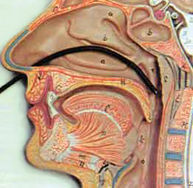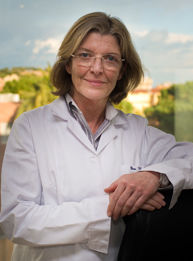Nasal endoscopy


Dra. Núria Mir

Directora de los cursos de “Anatomia Quirurgica de la Rinoplastia”
Nose reshaping (rhinoplasty)
What is nose reshaping (rhinoplasty)?
Simultaneously cosmetic and functional rhinoplasty is an operation to fully correct defects in the nose. The aim of the nose reshaping operation or rhinoplasty is to both repair cosmetic defects and maintain or correct nasal functioning so that the patient can breathe correctly.
What tests are needed before planning surgery?
The most important consideration for a nose reshaping operation or rhinoplasty is the examination of the nostrils by means of a nasal rhinoscopy, nasal endoscopy and an external analysis of the nasal “pyramid”, in order to determine, together with the patient, how to correct the nasal pyramid and achieve the desired facial harmony.
It is sometimes necessary to carry out further analysis, such as image sampling. These give the patient a rough and practical idea of what the result of the rhinoplasty will look like.
What happens during surgery?
The rhinoplasty operation is performed under general anaesthetic and is carried out via an endonasal approach (inside the nose) without any external incisions. Only in specific cases, with the patient’s prior consent, will some small incision need to be made, which after a few weeks is usually no longer visible.
During the rhinoplasty, the internal and external defects are corrected. Nasal packing is placed inside the nose and a splint over the freshly operated nose to protect the results of the operation. This protection is kept in place for a few days.
How can the nose be reshaped without making external incisions?
The nose is formed of cartilage and bones and its shape is determined by these elements. The shape of the lower part of the nose, or nasal base, depends on the shape of the alar cartilage and nasal septum. Similarly, the shape of the upper part of the nose will depend on the shape of the upper cartilage and the nasal bones.
The endonasal rhinoplasty is performed by making incisions inside the nose which are strategically tailored to each of these structures listed above to effect the desired changes to them. The most common changes include stitching, cartilage repositioning, correcting bone fractures and cartilage reduction.
What happens after surgery?
After surgery, the nose will be blocked for the first few days and the patient will need to breathe through the mouth. The postoperative period is painless, although the blocked nose can be somewhat uncomfortable. Similarly, there can be some swelling or bruising to the face.
Normally, a few weeks after the operation patients can resume their usual day-to-day activities, although the patient should avoid any knocks or bumps to the operated area. For this reason, it is advisable for patients to refrain from contact sports during the first few months of recovery unless they use adequate protective equipment.

Before and after aesthetic and functional rhinoplasty
Are there any risks?
Rhinoplasty, like any other surgical procedure under general anaesthetic, involves a minimal risk of complications due to the general anaesthetic and possible bleeding. Nevertheless, in patients who not suffer from any serious illnesses, this risk is very low.
In all cases, the detailed patient history and pre-surgery examinations allows us to assess the specific risk for each patient and avoid possible complications.
Who is Dr Núria Mir Ulldemolins?
Dr Núria Mir Ulldemolins is an ENT specialist. She is currently Head of the ENT Department of l’Esperit Sant de Santa Coloma de Gramanet Hospital and spokesperson for the facial plastic surgery section of the Spanish Association of Otorhinolaryngology.
She completed her residency training in Otolaryngology and Cervicofacial Pathology at Santa Creu i Sant Pau Hospital in Barcelona. Throughout her career, rhinoseptoplasty and facial surgery have been her main focus; Dr Mir has attended courses and placements with surgeons specialising in rhinoplasty, such as Dr G. Aiach in Paris. She has published articles on rhinoseptoplasty and regularly participates in courses, seminars and conferences on the subject.
She also has a PhD in surgical medicine and a MSc in Medicine and Cosmetic Surgery from the University of Barcelona.